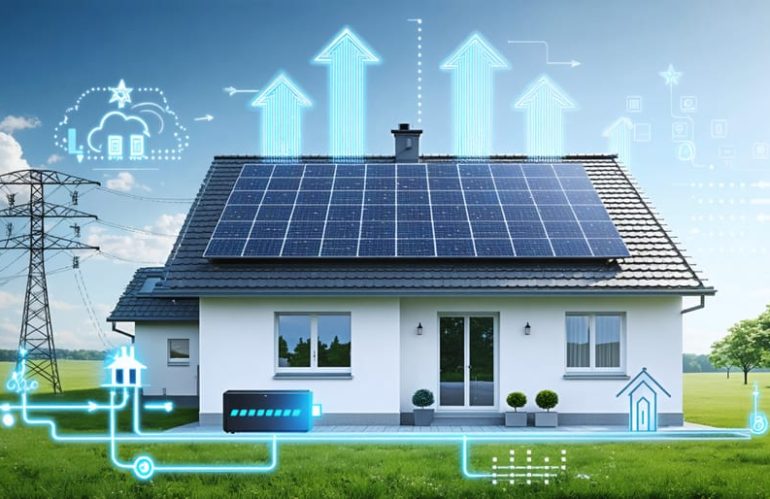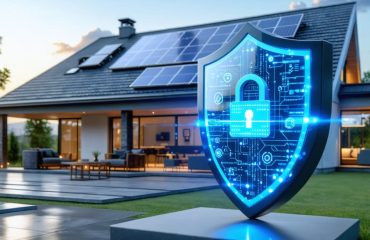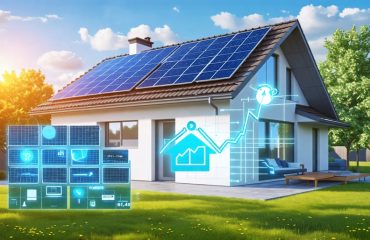Smart grid integration represents a revolutionary leap forward in how we power our homes and interact with the energy grid. By connecting your home’s solar panels, battery storage, and smart appliances to an intelligent network, you gain unprecedented control over your energy consumption while contributing to a more resilient power system.
Think of smart grid integration as your home’s energy command center – automatically optimizing when to use solar power, store excess energy, or draw from the grid based on real-time electricity prices and usage patterns. This intelligent orchestration not only slashes utility bills by up to 30% but also provides a critical backup power source during outages.
For homeowners already investing in solar and storage systems, smart grid integration transforms these standalone components into a cohesive ecosystem that maximizes return on investment while supporting the broader transition to clean, reliable energy. As utility companies increasingly offer incentives for grid-connected systems, the financial and environmental benefits of smart integration have never been more compelling.
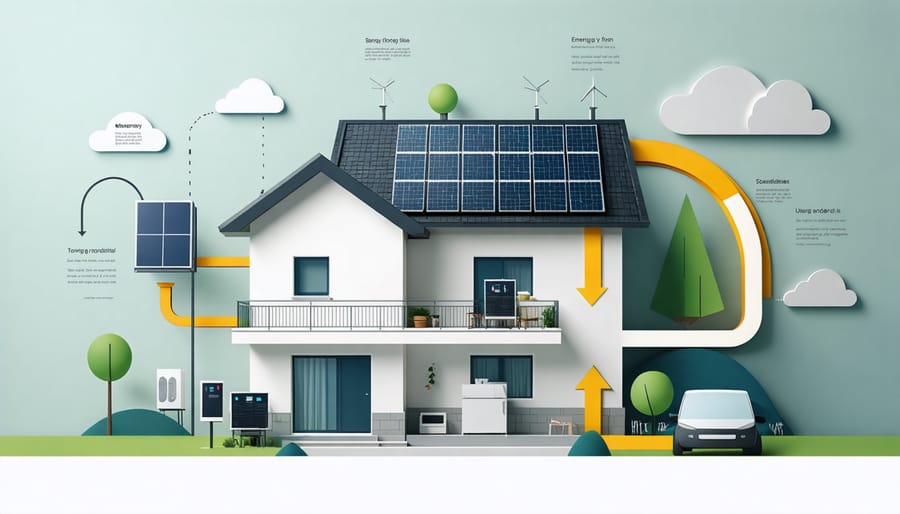
How Smart Grid Integration Transforms Your Home Energy Storage
Real-Time Energy Management
Real-time energy management is the brain behind your smart grid system, constantly monitoring and optimizing energy flow to maximize efficiency and savings. Modern solar energy management systems use advanced algorithms to make split-second decisions about where your power should come from and where it should go.
When the sun is shining, these systems prioritize using your solar power directly in your home. Any excess energy is either stored in your batteries for later use or sold back to the grid when prices are most favorable. During cloudy days or at night, the system automatically switches between stored battery power and grid electricity, always choosing the most cost-effective option.
Think of it as having a personal energy assistant that knows exactly when to store, use, or sell your power. This smart orchestration ensures you’re never paying peak rates when you don’t have to, and your home always has reliable power. The system even learns your energy usage patterns over time, anticipating your needs and adjusting its strategy to maximize your savings and energy independence.
Automated Cost Savings
Smart grid integration revolutionizes how your home interacts with the power grid, leading to substantial cost savings through intelligent energy management. By analyzing real-time electricity rates and your household’s energy usage patterns, smart systems automatically optimize when to draw power from the grid, use stored energy, or sell excess power back.
During peak hours when electricity rates are highest, your system can automatically switch to stored energy, helping you avoid premium pricing. Conversely, when rates are low (typically during off-peak hours), the system can charge your batteries, ensuring you have power stored for high-demand periods. This strategic charging and discharging can reduce your monthly energy bills by 20-30% on average.
The system also learns from your energy consumption habits, weather forecasts, and grid conditions to make increasingly intelligent decisions. For instance, if it predicts a cloudy day ahead, it might retain more stored energy rather than selling it back to the grid. This predictive capability ensures you’re always maximizing savings while maintaining reliable power supply for your home.
Additionally, many utility companies offer special time-of-use rates and incentives for homes with smart grid integration, further amplifying your cost savings potential.
Key Components of a Smart Grid-Ready Home
Smart Inverters and Controllers
Smart inverters and controllers are the brains behind an efficient solar energy system, working seamlessly with home battery storage systems to maximize your energy savings. These intelligent devices do much more than simply convert DC power from your solar panels into usable AC electricity for your home.
Modern smart inverters constantly monitor your home’s energy production and consumption, making split-second decisions about when to use solar power, when to store it, and when to draw from the grid. They can automatically adjust their output based on grid conditions, helping maintain stability and prevent power quality issues.
The controllers work like energy traffic directors, ensuring power flows efficiently between your solar panels, batteries, and home appliances. They can prioritize charging your batteries when electricity rates are low and using stored energy during peak rate periods, potentially saving you hundreds of dollars annually on utility bills.
These devices also provide real-time data through user-friendly apps, letting you track your energy usage and savings from anywhere. Many models can even predict your energy needs based on weather forecasts and your household’s patterns, automatically adjusting their operation to optimize performance and savings.
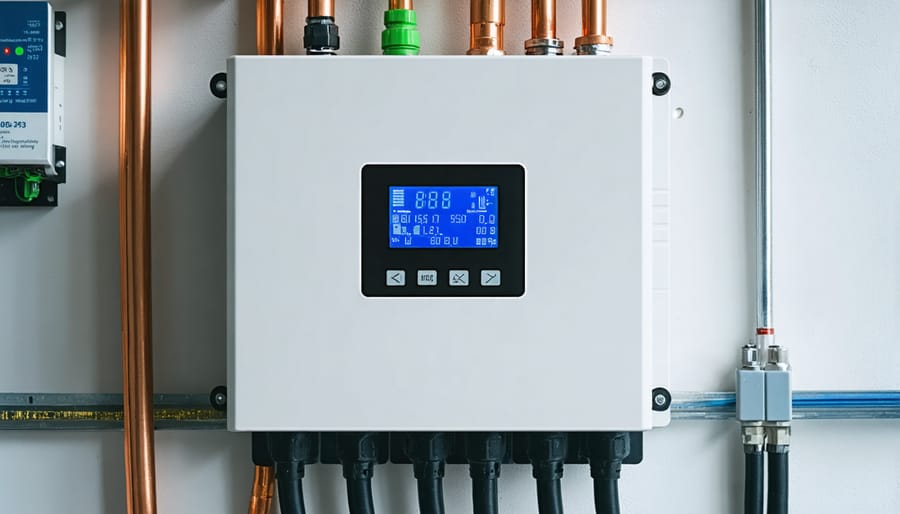
Communication Systems
Smart grid integration relies on sophisticated yet user-friendly communication systems that connect your home’s energy system with the broader power network. Think of it as a two-way conversation between your home and the utility company, sharing important information about energy usage, production, and grid conditions in real-time.
The heart of this communication system is your smart meter, which continuously monitors your energy consumption and production. This device sends encrypted data to your utility provider through secure wireless networks, similar to how your smartphone connects to the internet. For homeowners with solar panels and battery storage, additional communication devices help manage when to store, use, or sell energy back to the grid.
Most modern systems use a combination of WiFi, cellular, and power line communication (PLC) technologies to ensure reliable connectivity. Your system automatically chooses the most efficient method based on signal strength and availability. This redundancy means you’ll stay connected even if one communication method experiences issues.
The data exchanged includes current electricity prices, peak demand periods, and grid stability information. Your smart home energy system uses this information to make intelligent decisions, like charging your battery when electricity is cheapest or supporting the grid during high-demand periods – all while ensuring you maintain power for your essential needs.
Financial Benefits of Smart Grid Integration
Peak Load Management
Peak load management through smart grid integration offers homeowners a powerful way to avoid high electricity rates during peak demand periods. By intelligently coordinating your home’s energy consumption with grid conditions, smart systems can automatically shift energy-intensive activities to off-peak hours when rates are lower.
For example, your smart home system might automatically charge your electric vehicle or run your dishwasher during overnight hours when electricity costs are minimal. During peak periods, the system can draw power from your solar batteries instead of the grid, helping you maximize your energy storage ROI while avoiding premium rates.
This intelligent load shifting isn’t just about saving money – it also helps stabilize the grid for everyone. When thousands of homes participate in smart load management, it reduces strain on the power grid during critical periods, decreasing the likelihood of outages and the need for expensive backup power plants.
The best part? Most smart grid systems handle these adjustments automatically, requiring no daily input from homeowners while still delivering significant savings on monthly energy bills. You can simply set your preferences once and let the system optimize your energy usage around the clock.
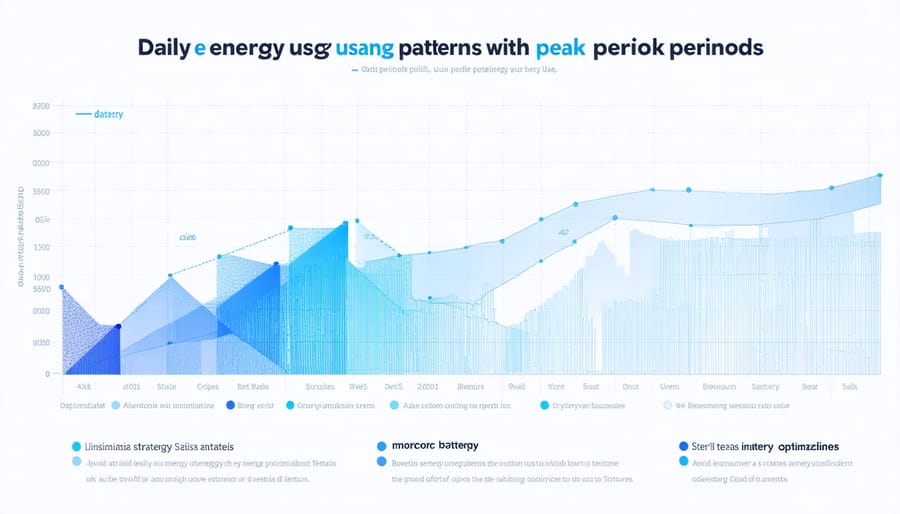
Grid Services Revenue
Smart grid integration opens up exciting opportunities for homeowners to earn additional income while supporting grid stability. Through various grid service programs, your home energy storage system can provide valuable services to utility companies, who will compensate you for your contribution.
The most common way to earn is through demand response programs, where you allow your utility to draw power from your battery during peak demand periods. This helps prevent grid overload and reduces the need for expensive peaker plants. Many utilities offer premium rates for this service, which can add up to significant savings over time.
Another revenue stream comes from frequency regulation services, where your battery helps maintain the grid’s stable frequency by quickly responding to fluctuations. Some areas also offer capacity payments for keeping your battery available as a backup power source during critical periods.
Grid services can typically earn homeowners between $500 to $1,500 annually, depending on your location, battery capacity, and available programs. These earnings are often in addition to regular savings from solar generation and time-of-use optimization. To participate, you’ll need a smart inverter and controller that can communicate with the utility’s systems, plus enrollment in your local utility’s grid services program.
Getting Started with Smart Grid Integration
Getting started with smart grid integration is simpler than you might think. Begin by scheduling an energy assessment of your home to identify your current consumption patterns and potential areas for improvement. This baseline understanding will help you make informed decisions about the smart technologies you’ll need.
The next step is installing a smart meter if your utility company hasn’t already provided one. This device serves as the foundation for two-way communication between your home and the power grid. Follow this by upgrading to smart appliances and installing a home energy management system (HEMS), which will help you monitor and control your energy usage in real-time.
Consider investing in renewable energy sources like solar panels, which work seamlessly with smart grid systems. If you already have solar panels, adding a battery storage system can maximize your benefits by storing excess energy for use during peak hours or grid outages.
Contact your utility provider to learn about available smart grid programs in your area. Many companies offer incentives or rebates for participating in demand response programs, where you can earn credits by reducing energy use during peak times.
Don’t forget to secure your smart devices by setting up strong passwords and keeping software updated. Start small with one or two smart devices and gradually expand your system as you become more comfortable with the technology. Most importantly, monitor your energy usage and costs to track the real benefits of your smart grid integration.
Smart grid integration represents a pivotal step toward a more sustainable and efficient energy future. By connecting our homes to intelligent power networks, we’re not just reducing our carbon footprint – we’re actively participating in a revolutionary transformation of how energy is produced, distributed, and consumed. The benefits are clear: lower utility bills, increased energy independence, and a more reliable power supply for everyone. Taking action now, whether through installing smart meters, upgrading to grid-interactive appliances, or simply learning more about available programs, puts you at the forefront of this energy evolution. As more homeowners embrace smart grid technology, we collectively move closer to a cleaner, more resilient energy system that benefits both our planet and our wallets. The future of energy is smart, sustainable, and within reach – and your participation can help make it a reality.

